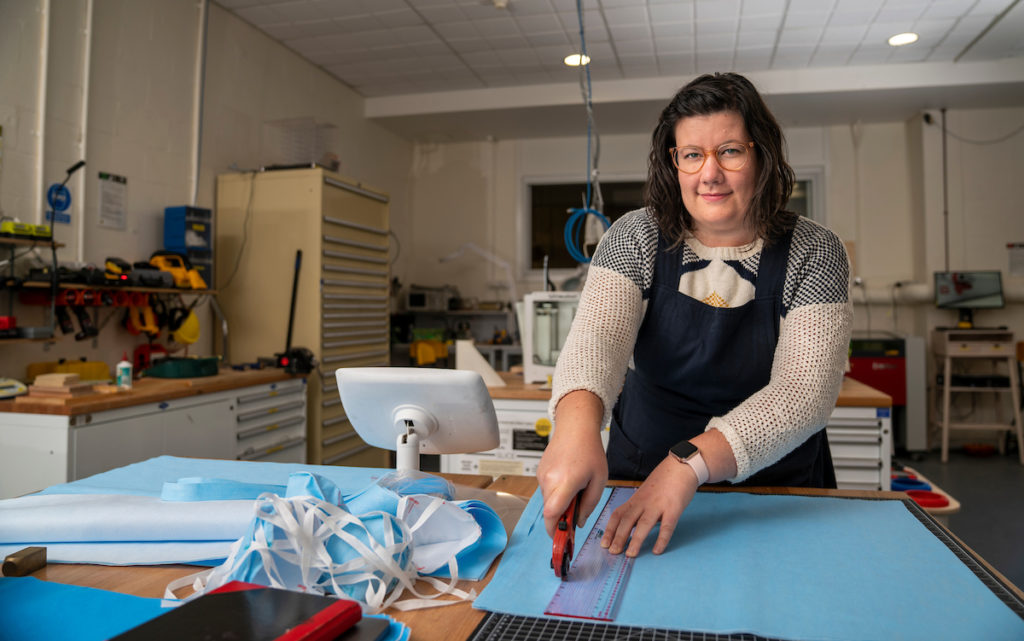The Australian National University’s (ANU) MakerSpace, and a group of volunteers, are working to provide personal protective equipment (PPE) to ACT and NSW health workers, free of charge.
The ANU MakerSpace has produced 2,000 face shields and face masks, with plans to produce another 15,000 as required, while volunteers have been sewing facemasks and returning them to the ANU to be sterilised prior to distribution.
There are enough volunteers and materials for another 2,000 masks, which will be distributed to non-frontline health workers, such as those in pathology labs.
Founder of the ANU’s MakerSpace, John Debs, said he’d heard ‘the buzz’ about 3D printing of face shields, but said the MakerSpace could “make them faster and more effectively with other tools”.
“We found some open-source designs from the United States, and we ran with them as a starting point.
“The healthcare community has responded very positively to our face shields, and they have had some input into the design,” Dr Debs said.
The ANU MakerSpace, which has 1,400 members including students, academics and professional staff from various disciplines, is an initiative founded and led by the Research School of Physics, and joined by both the School of Art and Design and the Research School Electrical, Energy and Materials Engineering at ANU.
ANU MakerSpace is a community facility where people “can learn by doing” to support their research, education or personal interest.
The MakerSpace’s Rachael Hanrick is managing the PPE production efforts and said a wide range of people have contributed to the project, including artists, craftspeople and designers from the ANU School of Art and Design.
“These people are all makers and doers, and their hands-on making experience and material knowledge are invaluable in our MakerSpace community and for this project in particular,” said Ms Hanrick said.
“We did not reinvent the wheel – we built on [PPE] design work that had already been done in other parts of the world hit harder and faster by COVID-19 than Australia has been so far. Our strength lies in the speed with which we can go from an idea to production, drawing on the strong networks and agile nature of our makerspace,” she said.
“While technologies such as 3D printers and laser cutters are more accessible than ever, they are still limited to relatively affluent makers – makerspaces fill this void as communal spaces that give access to a shared pool of resources.”



